May 15, 2025 | 00:29 GMT +7
May 15, 2025 | 00:29 GMT +7
Hotline: 0913.378.918
May 15, 2025 | 00:29 GMT +7
Hotline: 0913.378.918
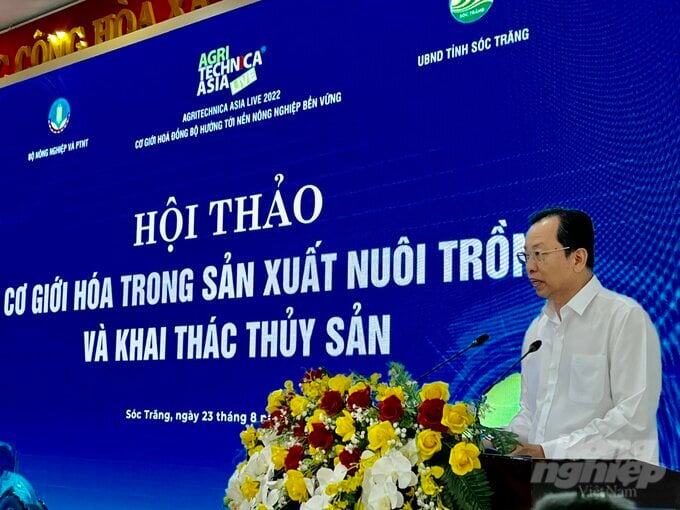
Vice Chairman of Soc Trang People's Committee Vuong Quoc Nam. Photo: Trong Linh.
On August 23, the Ministry of Agriculture and Rural Development coordinated with the People's Committee of Soc Trang province to organize a workshop on "Mechanization in aquaculture and fishing". This is the second seminar in the agricultural sector’s international series of events "Agritechnica Asia Live 2022" with the theme "Synchronous mechanization towards sustainable agricultural production".
Soc Trang has gradually established large shrimp farming areas in localities through risk-reduction tarpaulin pond models. Mechanization in aquaculture is applied from the initial stages of pond renovation to the harvesting. But facilitation of mechanization in aquaculture requires further improvement in the infrastructure system.
According to a number of businesses and localities in the Mekong Delta region, production, aquaculture, exploitation and processing of fishery products have applied mechanization in almost all stages. For example, in the pond designing stage, farmers use excavators and bulldozers to create new ponds. As for the pond improvement stage, mud scrapers and water pumps are utilized to remove bottom sludge and excess organic matter from the previous crop to prepare for the new crop.
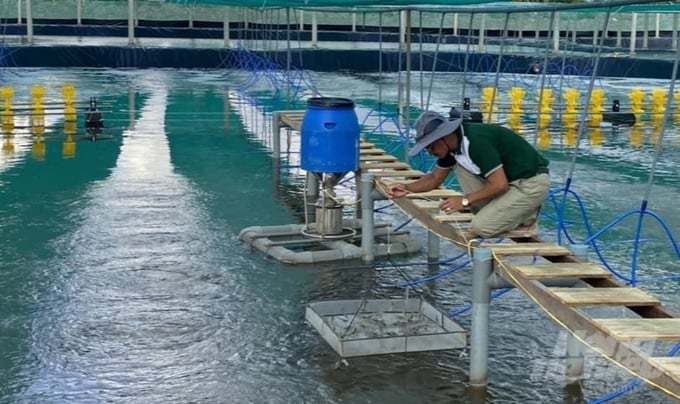
Traces of mechanization in aquaculture can be seen from pond renovation to the harvesting stage. Photo: Trong Linh.
In the shrimp care stage, automatic floor feeding equipment is used to spread the food evenly and reduce labor. Farmers also apply information technology to monitor and reduce feed loos. Environmental factor management and control (pH, temperature, dissolved oxygen) is secured thanks to water quality monitoring equipment and automatic monitoring systems.
Particularly in the multi-stage shrimp rearing model, many large farms now use shrimp auto feeder systems professionally, which is a great solution to reduce stress for postlarvae. Companies also use counting machines to control the exact quantity of shrimp sold.
Regarding mechanization in fishing activities, the most popular method at present is to use winches to drop and collect nets. The crane system has been installed for most fishing vessels with a length of 15m or more. This application results in an increase in productivity, reduced labor requirements and the development of modern fisheries.
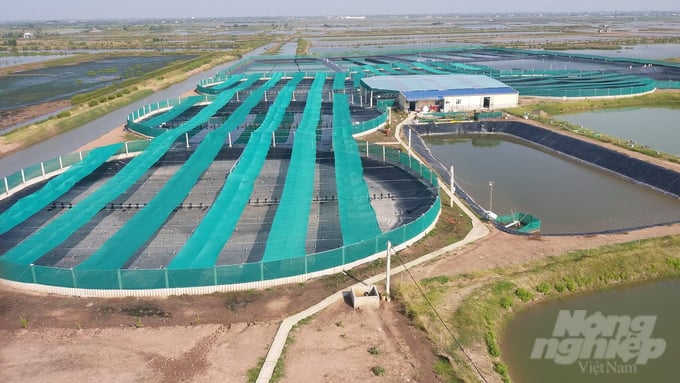
Mechanization in aquaculture production and fishing has initially achieved results in each production stage. Photo: Trong Linh.
When it comes to mechanization in production, electricity is an indispensable factor, especially for intensive and super-intensive farming models. Several large shrimp farms have now installed solar power systems, which are showing positive impacts in lessening the shortage of electricity for production.
According to experts, aquaculture in Vietnam and the world has been going through three stages of development. Phase I is traditional aquaculture mainly at a household scale, based on farmers' experience without using machines. Phase II is the transition to mechanization apllication based on mechanical and electrical machinery. Phase III is the era of automatic production where IoT (Internet of things) technology is fully utilized to manage computer software. The software then creates automation features in aquaculture. This stage is known as smart aquaculture.
“Mechanization in aquaculture production and fishing has initially achieved results in each production stage. But looking from the general view, the achievements of mechanization in aquaculture are still quite modest compared to the current context’s actual demands.” Director General of the Directorate of Fisheries Tran Dinh Luan thus stated that the Directorate of Fisheries had made a number of proposals and recommendations to promote mechanization in aquaculture.
The Government needs to remove difficulties related to the Land Law in terms of consolidating and exchanging plots as well as the issues of creating concentrated and large-scale aquaculture production areas in localities. Priority should be given to topics and projects associated with enterprises to facilitate the process of conducting research and supplying equipment for aquaculture. It is also deemed essential to devise a number of pilot projects to apply technology to manage cage farming establishments and key subjects that have been granted identification codes.
Localities should review planning and build large-scale and concentrated aquaculture areas associated with processing and material supplying factories, invest in synchronous infrastructure to create conditions for farming establishments to quickly apply mechanization from production - preservation - processing - transportation to product consumption.
Research units need to focus on applying specific types of machines and equipment for the production, preservation and processing of fishery products to replace imported machinery, ensuring efficiency in models regardless of large or small scale. Specialized organizations should be formed to provide mechanized and automated services at an appropriate price, at the same time sharing information on the positive effects of using automated machinery and systems in aquaculture.
Translated by Samuel Pham

(VAN) Data from 10,000 farming households will help professionalize production organization and support the implementation of the One Million Hectares Program for High-Quality, Low-Emission Rice Cultivation.
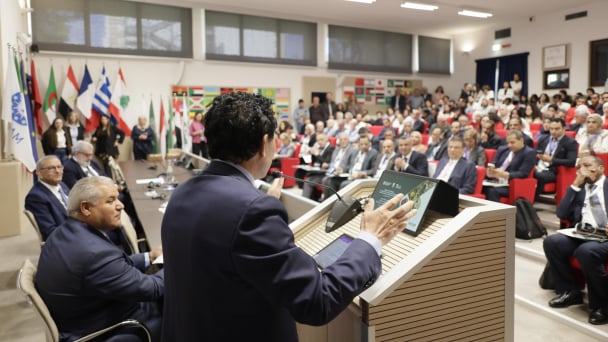
(VAN) FAO Director-General QU Dongyu marks International Day of Plant Health at NENA conference.
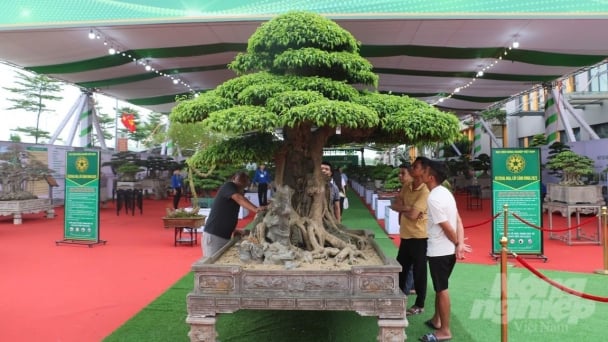
(VAN) Deputy Minister of Agriculture and Environment Hoang Trung affirmed that floriculture and ornamental plants are a growing industry that receives significant global attention.

(VAN) The three staple crops dominating modern diets – corn, rice and wheat – are familiar to Americans. However, fourth place is held by a dark horse: cassava.
/2025/05/10/4037-3-223011_495.jpg)
(VAN) Remote sensing technology is becoming an indispensable tool in monitoring resources, developing modern agriculture, and protecting the environment in Vietnam.
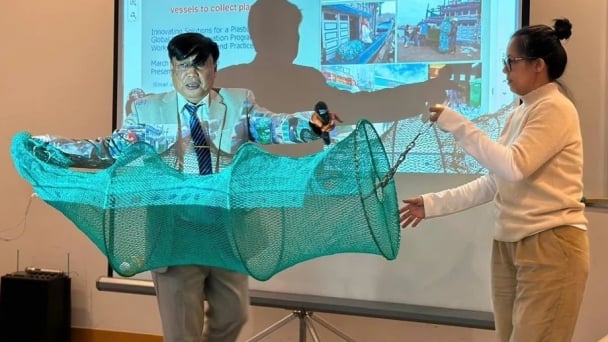
(VAN) The trash bag used on fishing vessels can withstand rough sea conditions, including level 8 to level 10 winds and waves. Notably, it can be hung anywhere on the boat.
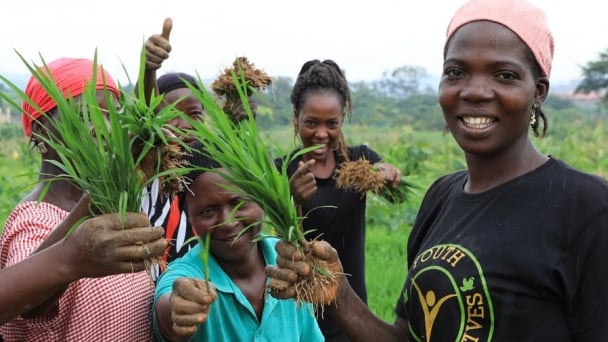
(VAN) African leaders launched the Kampala Declaration on Building Resilient and Sustainable Agrifood Systems in Africa, marking a bold step toward transforming the continent's agriculture.